With fewer than 250 women in senior roles compared to over 2000 men nationwide, we delve into the barriers and pathways to closing the gender gap.
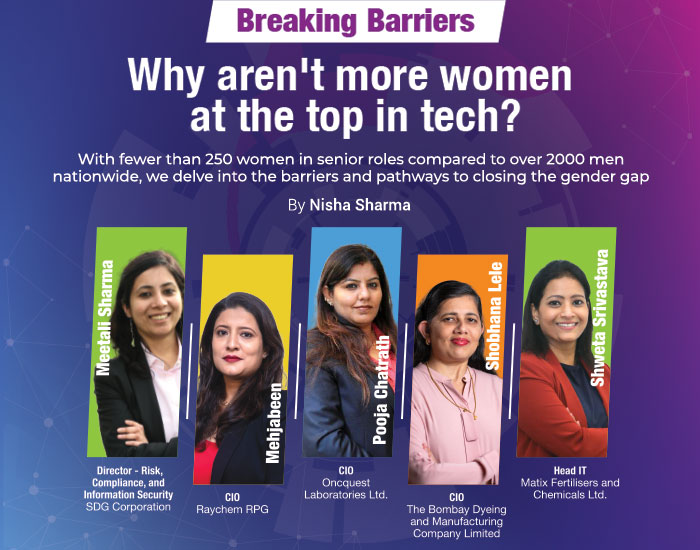
While women have made significant strides in diversifying workplace roles traditionally associated with men, their representation in the IT and Technology sector remains low, accounting for about a quarter of their roles. This disparity becomes even more visible when considering leadership roles within the IT field.
For instance, in the 14th edition of the NEXT100 awards, hosted by the 9.9 Group, out of 1037 IT applicants, only 8% of the women professionals were the winners. The issue lies in more than just reaching the top; it’s the disproportionately low number of female applicants, constituting just 12% of the total candidates.
The cover story delves deep into the multifaceted issues surrounding gender equality in IT leadership, exploring the systemic challenges that hinder women’s progression and the transformative impact of female leaders driving innovation and change. From navigating cultural norms and societal expectations to embracing emerging technology trends, women in tech are at the forefront of shaping the industry’s future.
This story discusses women’s struggles in tech leadership and highlights their skills and expertise in the tech world.
Gender disparity in tech leadership
A survey by SPR highlights the persistent gender bias in STEM fields, with 73% of over 500 women experiencing discrimination in the past year. Common issues include being overlooked for promotions, pay disparities, and underestimation of abilities based on gender. Despite these challenges, only 14% reported their experiences to HR, often feeling their concerns were dismissed. The survey also reveals a perceived gender pay gap by half of the respondents and skepticism about achieving gender diversity in tech within the next decade. Additionally, gender-based harassment persists, notably in remote work settings, underscoring the urgent need for systemic change and more robust policies to support women in STEM.
Mehajabeen Taj Aalam, CIO, Raychem RPG, provides crucial insights into the ongoing gender gap in the tech sector: Mehajabeen delves into the nuanced reasons behind the scarcity of women professionals in senior roles, attributing it to various societal and cultural factors. She observes that while the influx of women into the workforce has increased, they tend to be clustered at junior to middle management levels, with fewer progressing to senior positions. Drawing from personal experience, Mehajabeen highlights the palpable scarcity of women in the industry, often recognizing familiar faces at conferences.
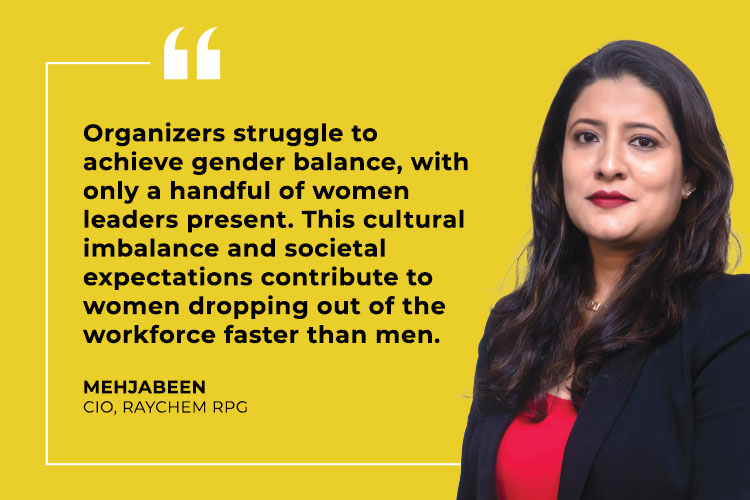
She identifies societal expectations as a significant hurdle, noting the unfair burden placed on women regarding family obligations. This imbalance often forces women to prioritize family over career, leading to fewer opportunities for career advancement. Additionally, factors such as childbearing and rearing contribute to women dropping out of the workforce at a faster rate than their male counterparts, impacting their perceived reliability and career trajectory.
Mehajabeen emphasizes that the issue isn’t rooted in women’s potential or aptitude but rather in the support systems and cultural norms surrounding them. Despite progress in gender representation and empowerment, entrenched cultural values still prioritize women’s familial responsibilities over career aspirations. This imbalance extends to workplace policies, where women, unlike their male counterparts, may face challenges balancing work and family commitments.
Overall, Mehajabeen’s insights underscore the systemic challenges women face in the tech industry. She urges a reevaluation of cultural norms and greater support systems to enable women to reach senior leadership positions.
From education to career
The gender disparity within the technology sector begins to emerge during the formative educational years, with many factors influencing young women’s decisions to pursue careers in technology or STEM-related fields. A recent study by PricewaterhouseCoopers reveals a stark contrast in career guidance, with only 16% of female students being encouraged towards a tech career compared to 33% of their male counterparts. This lack of encouragement is compounded by a noticeable shortage of female role models in the sector, leaving many to perceive technology as predominantly male territory. In fact, when asked to identify a renowned woman in tech, only 22% of respondents could do so.
Despite a strong initial interest in STEM subjects, with 74% of young women expressing enthusiasm, a mere 18% choose to follow through with STEM or computer science paths, according to research from the University of Washington. This trend persists globally, with female students in the UK significantly less likely to study STEM subjects at both pre-university (64%) and university levels (30%). Furthermore, only 27% of female students consider a career in tech, a stark contrast to 61% of male students, as highlighted by PricewaterhouseCoopers.
In the United States, the disparity is equally evident within the workforce, with women constituting only 28% of STEM professionals, despite men representing 73% of all STEM workers, according to a study by Martinez & Christnacht (2021). Additionally, women are underrepresented in higher education, earning just 18% of computer science bachelor’s degrees, and they account for only 20% of professionals in the computer science field, reports Computerscience.org.
Globally, the scenario varies with Georgia leading by example, where 56% of STEM fields workers are women, as the International Labour Organization (ILO) reported in 2020. This stark variance underscores the critical need for systemic change across educational and professional landscapes to foster a more inclusive environment that encourages and supports women in pursuing and thriving in technology and STEM careers.
Tech shift in healthcare: women leaders drive data revolution
In examining the transformative impact of BI and data analytics in the healthcare sector, significant changes have emerged in response to the COVID-19 pandemic. Emphasizing the pivotal role of predictive analytics, Pooja Chathrath, CIO at Oncquest Laboratories Ltd., sheds light on how these technologies drive proactive health measures, particularly in predictive testing initiatives.
This shift towards predictive analytics revolutionizes patient care and empowers healthcare organizations to adopt data-driven decision-making across various functions. This underscores how BI facilitates personalized medicine by leveraging patient data, thus enhancing the quality of healthcare delivery.
Furthermore, integrating AI and machine learning augments the analysis of vast datasets to extract actionable insights, fostering innovation within the healthcare ecosystem.
In the context of women in tech, the Pooja Chatrath insights highlight the vital contributions of female leaders in propelling technological advancements, particularly in traditionally male-dominated industries like healthcare and technology. Their expertise exemplifies the intersection of technology and healthcare, showcasing women’s pivotal role in shaping the future of BI and data analytics. By embracing innovation and leveraging data-driven strategies, women in tech are effecting transformative change and breaking industry barriers.
The critical role of women in shaping the future of cybersecurity
In today’s rapidly evolving digital landscape, the importance of cybersecurity and data privacy cannot be overstated. With the global average data breach cost increasing by 15% over the past three years, organizations face mounting challenges in protecting their digital assets from sophisticated cyber threats. Amidst these challenges, Meetali Sharma, Director – Risk, Compliance, and Information Security at SDG Corporation, offers valuable insights into safeguarding digital assets and ensuring data privacy.
Her expertise extends beyond mere technical solutions; she advocates for a holistic approach grounded in the WHOM principle: What to protect, How to protect it, Owners of the protection, and Monitoring of controls. Her approach emphasizes the collective responsibility of all individuals within an organization to prioritize information security, highlighting the crucial role of proactive measures and continuous monitoring in mitigating cyber risks.
However, Meetali’s insights extend beyond cybersecurity; they also resonate within the broader context of women in technology. Despite progress towards gender diversity, women remain underrepresented in cybersecurity roles, comprising only 20% of the global workforce. Her emphasis on inclusivity and collaboration underscores the importance of empowering women in tech and promoting their active participation in cybersecurity efforts.
This explores how organizations can adopt inclusive approaches to cybersecurity while also addressing gender disparities in the field.
Navigating gender equality challenges in IT leadership
In discussions surrounding workplace gender equality and women’s representation in IT leadership, several key challenges emerge. One significant hurdle is the mid-level career break, where women often find it challenging to balance family and career responsibilities due to societal expectations. In many cultures, women are traditionally considered the primary caregivers for children, parents, and in-laws. This can lead to difficult decisions about prioritizing home or career, hindering women’s progression to top leadership roles and perpetuating a gender gap in IT leadership.
Women were 12% less likely than men to receive leadership skills training and 15% less likely to be assessed to gain insights into their strengths and development gaps as leaders. (Source: DDIWorld)
Moreover, women are often reluctant to seek support, influenced by societal norms and potential negative perceptions. Women may hesitate to ask for assistance, fearing judgment or repercussions, mainly if they are single and seeking support from male peers or mentors. This reluctance further compounds the challenges women face in navigating their careers and accessing opportunities for advancement.
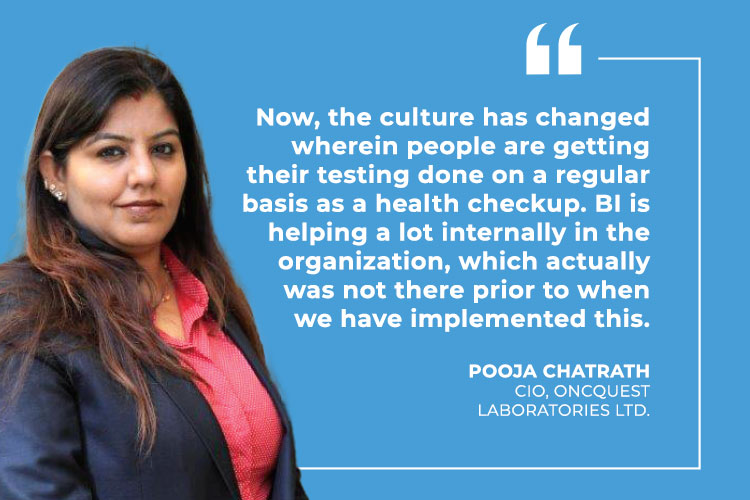
Additionally, gender pay gaps persist in the tech industry, with eligible male counterparts often receiving more opportunities and higher pay than their female counterparts. This disparity reflects systemic biases and discourages women from aspiring to leadership roles, knowing they may not receive equal recognition or compensation for their contributions.
Addressing these challenges requires multifaceted approaches. Organizational policies that support work-life balance, such as flexible hours and parental leave, can help mitigate the impact of mid-career breaks and encourage women’s continued participation in the workforce. Empowering women to advocate for themselves, challenge societal norms, and seek mentorship and support networks can also help overcome barriers to advancement.
Efforts to close the gender pay gap and promote equitable compensation practices are essential for fostering an inclusive workplace where women feel valued and respected. Ultimately, achieving gender parity in IT leadership demands systemic changes and cultural shifts that recognize and address the unique challenges faced by women in the tech industry.
Leading with action
Despite comprising 36% of India’s tech workforce, women face a steep decline in representation as they climb the corporate ladder. Skillsoft’s 2022 Women in Tech Report India Region reveals that only 7% hold executive-level positions, 13% work as directors, and 17% occupy mid-level managerial roles.
In navigating this landscape, the importance of action over rhetoric becomes evident. Practical experience, rather than theoretical knowledge alone, is crucial for growth in an industry plagued by gender disparities. By actively participating in projects and embracing hands-on learning, aspiring women in tech can overcome obstacles and forge paths to leadership. As highlighted by Mehajabeen, the distinction between tasks is irrelevant; immersion in real-world scenarios cultivates invaluable insights and propels professional advancement.
Addressing the major challenges women in tech face
The tech industry is growing fast and offers many job opportunities for people good at coding, programming, and other tech skills. But, women in tech often face many challenges that make it harder for them to succeed than men. These challenges include not having enough women leaders to look up to, facing unfair treatment because they are women, dealing with unwanted attention or comments, doubting their own abilities, and not having enough support to move up in their careers.
Even though there’s been some progress, women still struggle to find their place and grow in the tech world. They are less likely to be in charge or to get promoted, even when they are just as qualified as men. This unfair treatment can make women feel like they don’t belong or can’t do well in tech.
Lack of mentorship hinders leadership climb
The persistent issue of women struggling to climb the leadership ladder in the tech industry, largely due to a lack of mentorship and sponsorship, is a critical challenge highlighted in McKinsey’s “Women in the Workplace 2023” report. Despite some progress towards equality, the tech sector grapples with significant hurdles hindering women’s career advancement. The report reveals a stark mentorship gap, with 58% of women aspiring to leadership roles, yet only 39% feeling they have the mentorship support necessary to achieve these ambitions. This gap not only stymies individual career growth but also impacts the industry’s capacity to foster a diverse leadership pipeline.
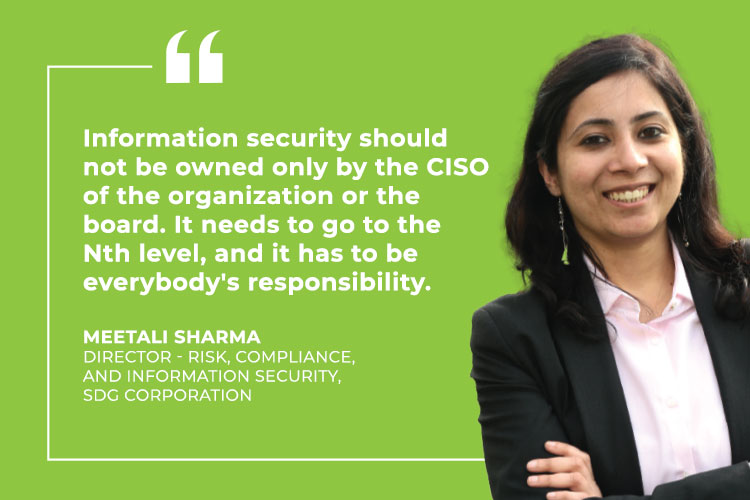
Moreover, the report sheds light on the importance of being well-integrated and informed within one’s company. A mere 20% of women reported feeling connected to their company’s mission and fully in the loop, a deficiency that can lead to decreased engagement and higher turnover rates. The disparities extend to sponsorship and feedback, crucial for professional development, where women also report feeling underserved.
Highlighting the efficacy of mentorship programs, the McKinsey report suggests such initiatives as key to retaining women in tech and advancing them into leadership roles, with organizations implementing formal mentorship programs seeing notable improvements in diversity at leadership levels. This serves as a call to action for the tech industry to embrace structured mentorship and sponsorship programs, equitable access to information and opportunities, and a culture that values constructive feedback. Such changes are not merely about fairness; they’re strategic imperatives for fostering innovation, satisfaction, and success within the tech sector.
The tech industry, often perceived as a progressive bastion, is not immune to the age-old issue of gender pay disparity. Despite advancements in technology and society, the gap between what men and women earn remains a significant concern. According to a 2020 report by Hired, women in tech roles earn 3% less than their male counterparts, a disparity that is even more pronounced for women of color and in certain specialized positions. For instance, female data scientists and product managers face even wider gaps, with nearly 20% less and 7% more earnings compared to their male counterparts, respectively. Furthermore, the Bureau of Labor Statistics highlighted that women’s annual earnings were only 82.3% of men’s in 2020, underscoring the systemic nature of this issue. With 78% of large tech companies acknowledging a gender pay gap, it’s clear that this is not just an isolated problem but a widespread industry challenge. Addressing this disparity requires a concerted effort to overhaul pay structures, promote transparency, and foster an environment where equality is not just aspired to but achieved.
Venture capital challenges for women-led startups
The challenge of securing venture capital funding is significantly pronounced for startups led by women, with a mere 2.3% of total investments directed towards them in 2022, according to Harvard Business Review. A strategy that has shown promise for female founders is seeking investment from women investors, who are reported to be twice as likely to invest in women-owned businesses compared to their male counterparts. Despite women founding only 25% of startups, and 37% having at least one woman on their board of directors, this approach suggests a potential pathway to bridge the funding gap.

However, recent analyses highlight a complex dimension to this strategy. While female-led startups might find it easier to obtain initial funding from women investors, this could inadvertently set the stage for challenges in future funding rounds. The perception of gender-based preferential treatment in these early investments might lead to skepticism or hesitancy among other potential investors later on. This situation underscores a nuanced obstacle: the initial advantage of gender-aligned investment might complicate broader investment prospects for female entrepreneurs in the long term.
Main challenges for women in tech:
1. Not enough women leaders: There aren’t many women in top positions in tech companies. This makes it hard for other women to see themselves moving up or to find mentors who understand their challenges.
2. Being treated unfairly: Women often don’t get the same chances as men. They might be passed over for promotions or not taken as seriously just because of their gender.
3. Dealing with harassment: Unwanted attention and comments are a big problem in tech. This can make the workplace feel unsafe or unwelcoming for women.
4.Feeling like an impostor: Many women in tech feel like they’re not good enough or that they’re going to be found out as a “fraud.” This isn’t true, but it’s a common feeling that can hold them back.
5. Needing more support: Women often don’t have sponsors — people in powerful positions who can help them move up in their careers. This makes it harder for them to get ahead.
What needs to be changed?
To make things better for women in tech, companies and the whole industry need to change. This means hiring more women, making sure they have the same chances to grow as men, supporting them when they face challenges, and making the workplace safe and welcoming for everyone.
By understanding these problems and working to fix them, we can help more women succeed in tech. This isn’t just good for women; it’s good for the tech industry and everyone who uses technology because it brings in new ideas and perspectives.
Strategies for motivating and aligning teams
As per a report by Team Stage, managers wield significant influence over team engagement, accounting for 70% of deviations. Yet, 39% of employees cite a lack of collaboration despite its acknowledged importance. While three-quarters of employers value collaboration as critical to success, the reality within organizations often falls short.

The data presented underscores the crucial role of managers in fostering team engagement and collaboration within organizations. Despite the recognized importance of cooperation, many employees report experiencing insufficient collaboration in their workplace. This gap between the perceived value of collaboration and its actual implementation suggests a disconnect between organizational priorities and managerial practices.
Managers play a pivotal role in shaping workplace dynamics and fostering a collaborative culture. Their leadership style, communication methods, and ability to facilitate teamwork directly impact employee engagement and collaboration. However, the high percentage of deviations in team engagement attributed to managers indicates a need for improvement in managerial practices.To address this discrepancy, organizations should prioritize leadership development and provide managers with the necessary training and resources to lead and motivate their teams effectively. Also, fostering a culture of open communication and inclusivity can encourage employee collaboration and mitigate the reported lack of cooperation.
Ultimately, recognizing the significant impact of managerial behavior on team dynamics and implementing strategies to enhance collaboration are essential steps toward creating a more engaged and productive workforce.
In this context, Shobhana Lele, CIO at The Bombay Dyeing and Manufacturing Company Limited, offers valuable perspectives on effective team management strategies and the importance of cultivating a supportive and inclusive work culture.

She emphasizes the importance of fostering connections between team members and senior leadership within the organization. Encouraging team members to engage with business leaders provides them with valuable insights into the organization’s broader objectives, reinforcing their sense of purpose and aligning their efforts with overarching strategic goals.
Driving success through feedback
Feedback is pivotal in driving continuous improvement, a crucial aspect of success in any field, including women in tech. Emphasizing the importance of feedback mechanisms, the women IT leaders highlight the need to define clear goals and objectives before soliciting feedback, ensuring that the input received aligns with the intended outcome. According to Pooja Chatrath, by involving relevant stakeholders, including clients, internal team members, and subject matter experts, feedback can be targeted and actionable.
Moreover, the importance of choosing appropriate communication channels to gather feedback effectively is highlighted. Whether through emails, social media, or direct communication, the goal is to create a conducive environment for open and constructive feedback exchange.
The example of developing an app illustrates the transformative power of feedback. When users provide input on the app’s usability, one should emphasize the importance of responding positively and making necessary modifications. This approach enhances user experience and fosters a culture of receptivity to feedback within the tech team.
Fostering feedback through incentivization by recognizing team members who detect the highest number of errors during testing is another example. This proactive strategy nurtures a culture of consistent enhancement and creativity.
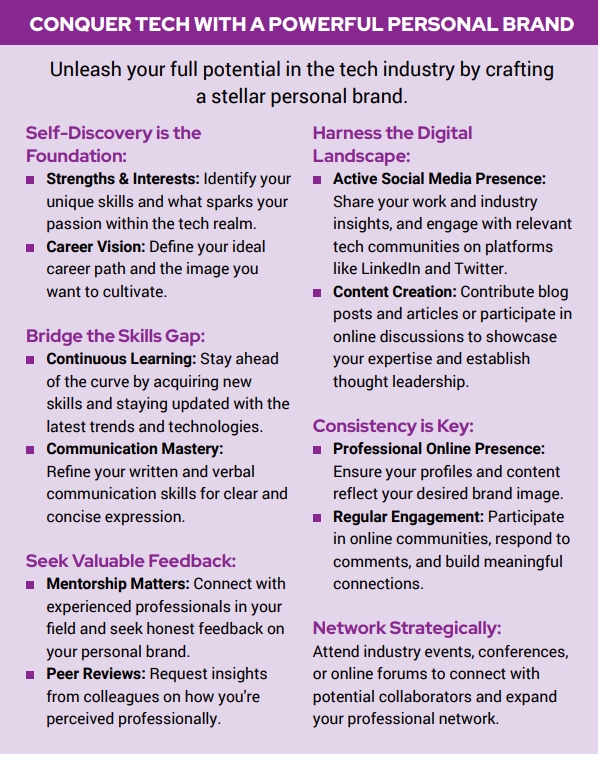
Conclusion
The tech industry boasts impressive contributions from women across various roles, yet significant gender disparity persists. Women face hurdles like underrepresentation in leadership and limited access to funding. These challenges, along with bias and harassment, stifle both women’s careers and the industry’s potential for innovation. However, inspiring stories of successful women in tech demonstrate the need for change. By prioritizing mentorship, equal pay, and fostering a safe work environment, the industry can unlock its full potential. Furthermore, supporting women through feedback, cybersecurity awareness, and personal branding empowers them to thrive. Achieving gender equality in tech requires a collective effort, but the rewards – a more creative, innovative, and successful industry – are well worth the pursuit.
Establishing a network of mentors and advisors is key to advancing one’s career across all fields. Guidance can be found among colleagues, supervisors, or leaders you respect. It’s a strategy I strongly recommend for those just beginning their professional journey.
To foster equal opportunities, it’s critical to cultivate an inclusive culture. This involves elevating women to leadership positions, expanding mentorship initiatives, and broadening educational opportunities. Such measures are crucial for eliminating obstacles and enabling success for all.
